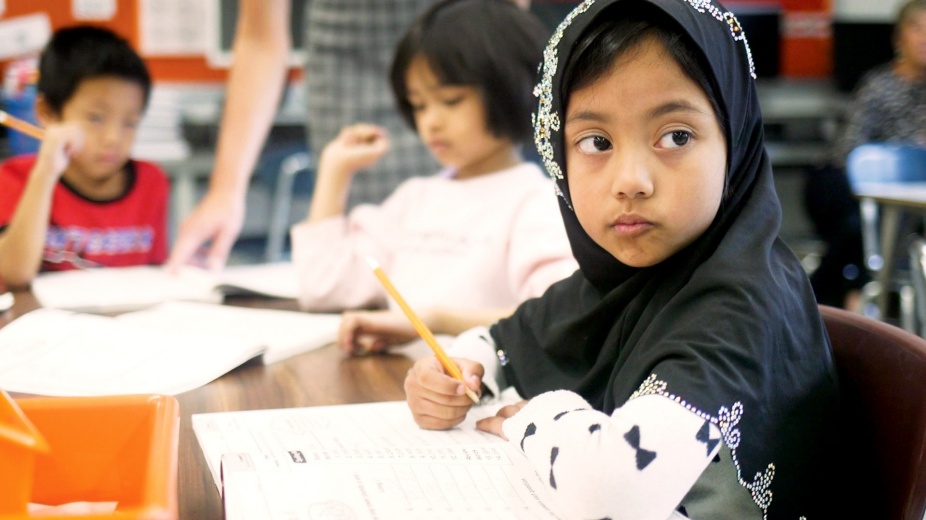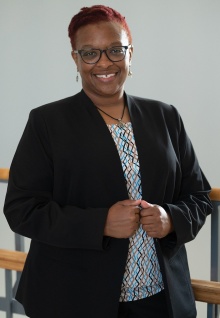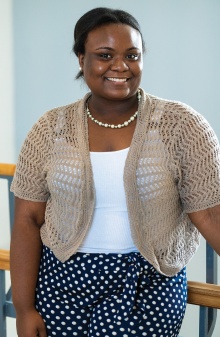

A historic community school turns around and embraces the residency approach
BY MICHELLE KEARNS
As Tanika Shedrick, MA ’06, begins her fourth year as principal of BUILD Community School, the school’s partnership with GSE and its Teacher Residency Program has helped turn the historic Black school into a learning lab. Shedrick, a member of the program’s steering committee, can see how the five residents placed at BUILD during the program’s first two years have contributed to a dynamic environment for everyone—administrators, teachers and students. This year, the school is hosting five residents at once.

Tanika Shedrick, MA ’06. (Photo/Dylan Buyskes)
“I love the fact that residents come in with fresh eyes and with new techniques,” Shedrick said. “Some of them have been in education. Some of them have not. So, they’re coming in with new eyes to a current problem or a current situation.”
For Shedrick, the residents are part of the foundational change and rebirth happening at BUILD, home to about 350 pre-kindergarten through eighth grade students. Founded in 1969, the school was named with an acronym that reflected the aspirations of the Civil Rights era: Build, Unity, Independence, Liberty, Dignity. Parents and community activists, frustrated with the quality of education for Black children in Buffalo’s segregated system, negotiated with the Board of Education and created the school as a place for innovation.
Shedrick, who went to elementary school there, remembers a waitlist to get in. But when data showed students were scoring poorly on assessments, the school, then known as BUILD Academy, closed. That same year, in 2018, it reopened with Shedrick as principal and a transformational plan. This included an independent monitor, more community support and a new name: BUILD Community School.
Now as she leads the school, she spends as much time as she can walking the halls and visiting classrooms. As she and other administrators talk with teachers about their work, benefits of the residency experience came through last year after an exchange with a GSE alumna. Sydney Favors, EdM ’20, was hired as a social studies teacher after she graduated last year and Shedrick was impressed by her swift, professional approach to a problem: When Favors found out her students weren’t recognizing vocabulary in the curriculum, she was comfortable enough to pivot and try something new. Favors worked with the school’s instructional coach and tried new strategies, including having students use context as a tool to figure out the meaning of a word.

Sydney Favors, EdM ’20. (Photo/Dylan Buyskes)
“She came in, ready to tackle any challenge,” said Shedrick.
As Shedrick works, she gravitates to exchanges like these. As a school principal, working with teachers and students energizes her. She appreciates GSE’s collaborative approach and regular meetings of the residency steering committee.
“You have a true collaboration. Input is flowing. We’re all constantly improving the program,” she said. “One of the things I love about it, is that we’re conducting research in real time.”
As the program unfolded, people made adjustments as needed: For example, mentor teachers now are getting more training.
This year, Shedrick has started meeting regularly with residents so they have a forum for sharing their observations and progress. The Teacher Residency Program arrived during a revolutionary time in education. The pandemic-provoked shift to virtual learning forced teachers and schools to reimagine their teaching practices.
“We reinvented education this year with remote instruction and hybrid learning. We’re reinventing what it should really look like,” Shedrick said. “Why keep everything the same, just because that’s how we’ve done it for years?”
The above story is featured in:
Developing a transformational approach, building on tradition. As understanding of, awareness about and experience with GSE’s Teacher Residency Program has grown, so has interest in and demand for it—and subsequently its impact. The program and its approach to teacher training is now in its third year in partnership with the Buffalo Public Schools.